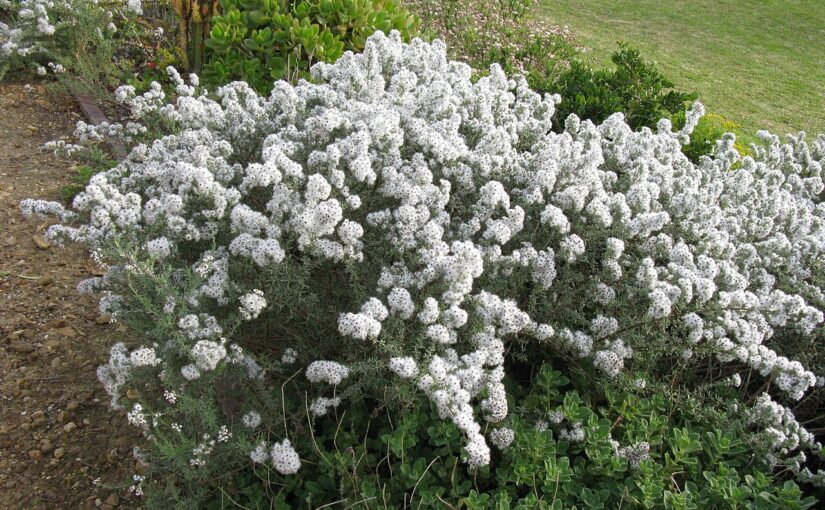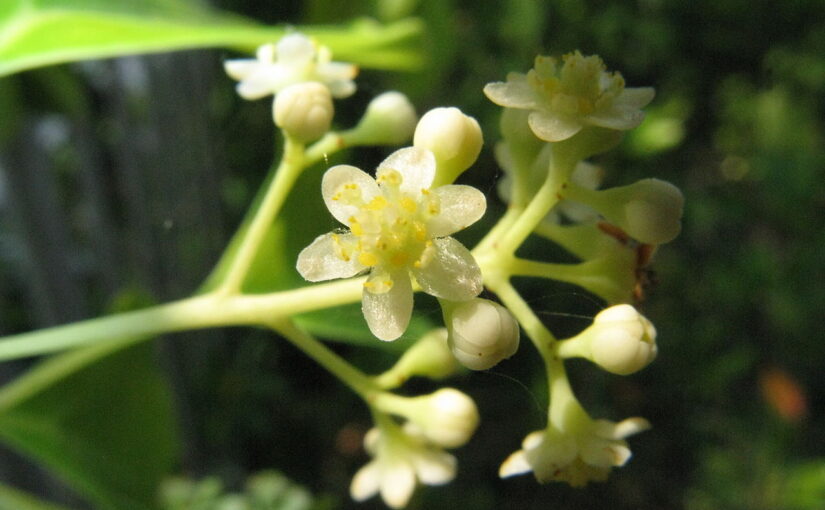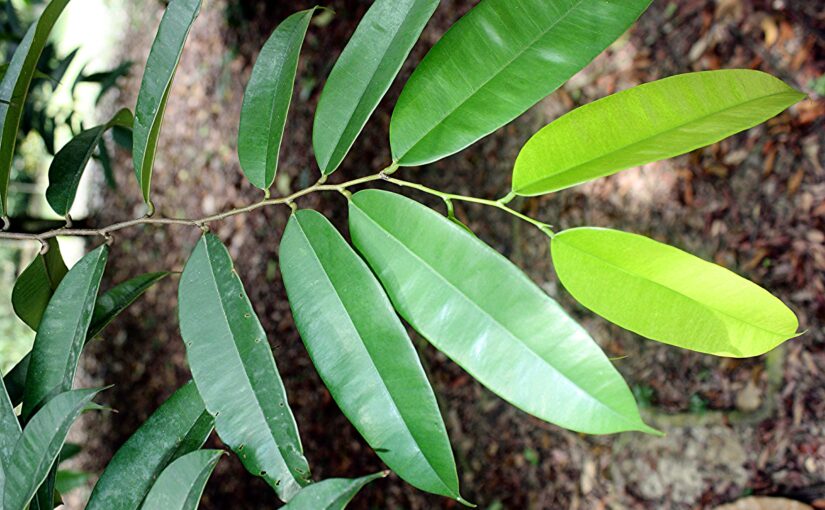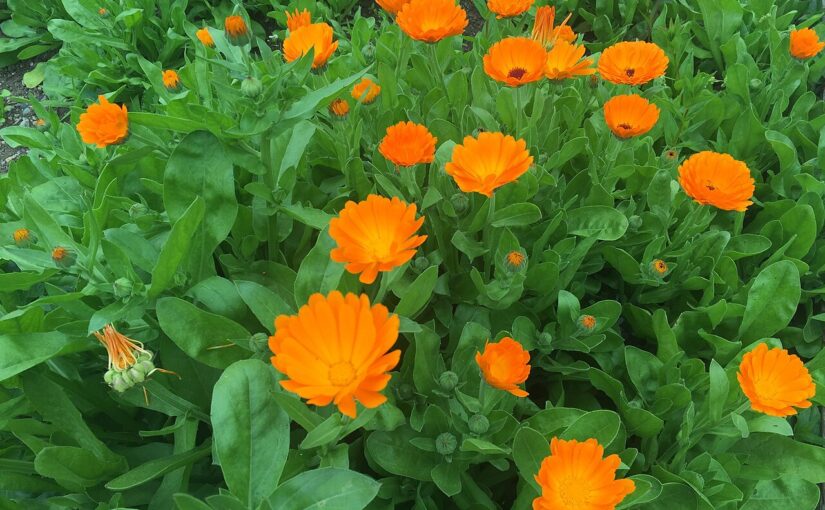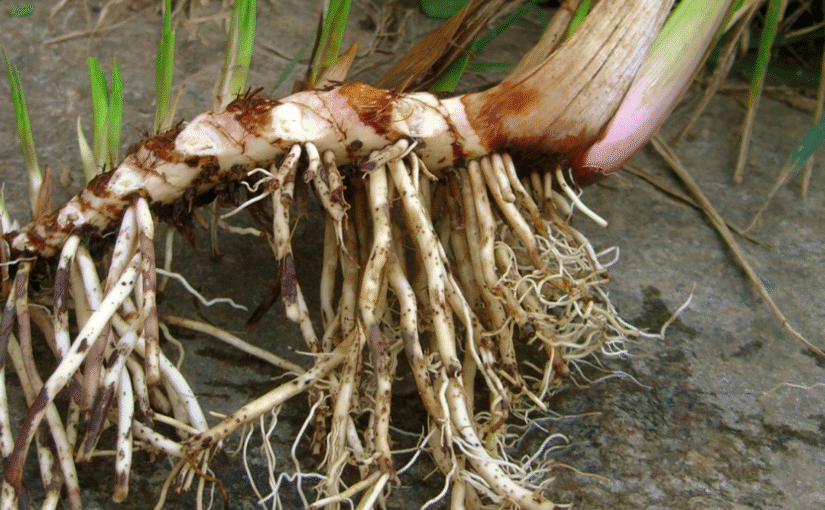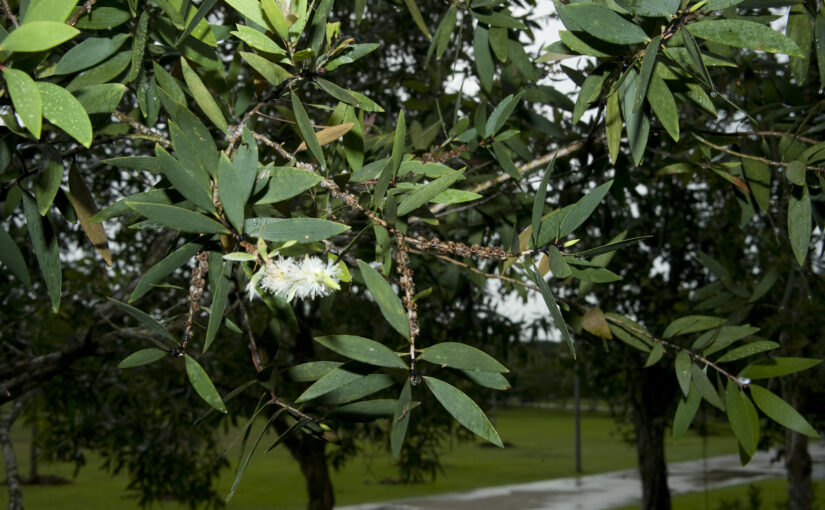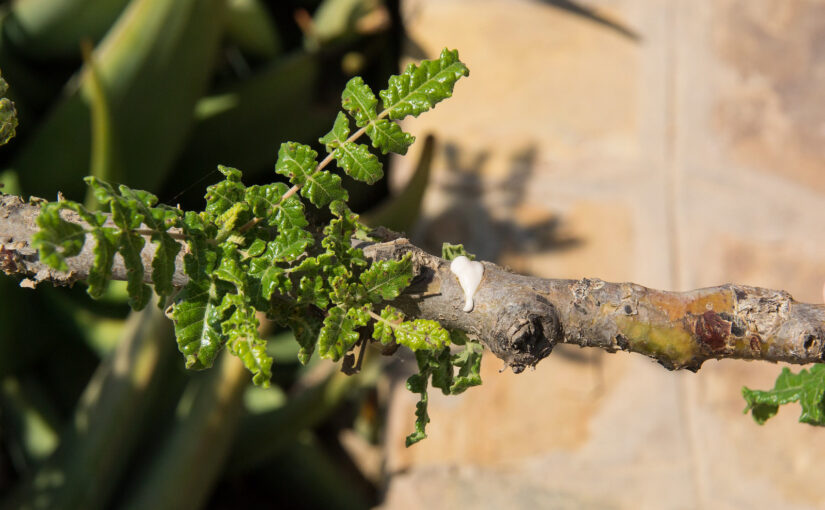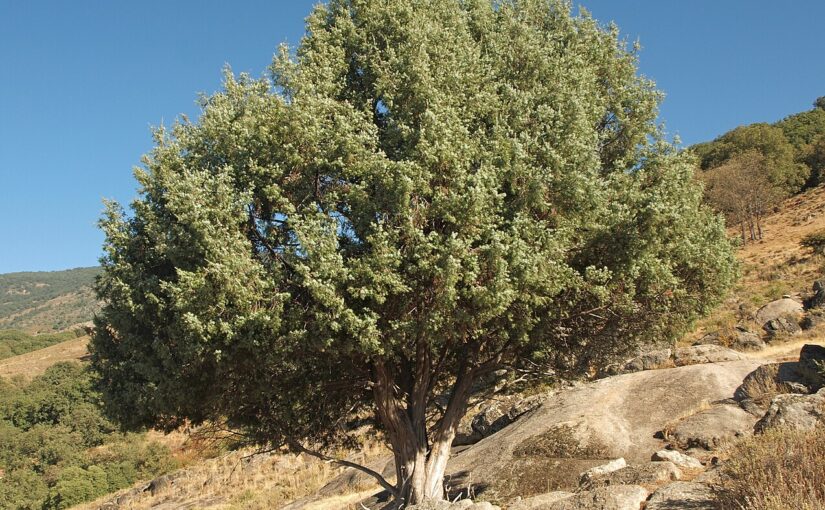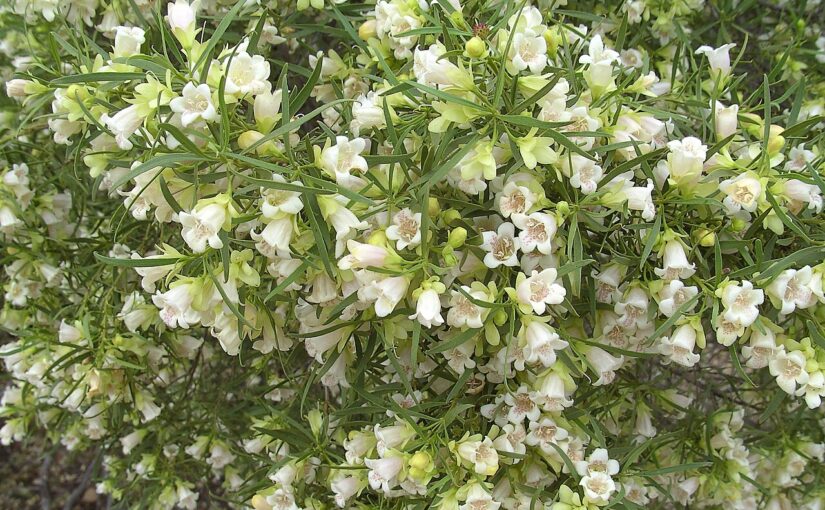Cape snowbush essential oil is derived from Eriocephalus africanus, an evergreen shrub native to South Africa’s Western Cape. This beautiful plant is well known both in the wild for its dense, soft appearance and in gardens for its resilience to dry, challenging environments. The oil is steam-distilled from the shrub’s small, brilliant white flowers, which seem to blanket the leaves in snow each spring. The resulting essential oil is a pale to dark yellow, thin liquid with a delicate sweetness, blending floral notes with faint camphoraceous undertones. Its primary active constituent is 1,8-cineole, complemented by an array of other monoterpenes and oxides that account for its beneficial qualities and signature aroma.
Continue reading Cape Snowbush Essential Oil: The Floral Healer of the CapeMonth: September 2025
Camphorwood (Ho Wood) Essential Oil: The Soothing Essence of Tranquility
Camphorwood essential oil, more widely known in aromatherapy as ho wood oil, comes from Cinnamomum camphora, a member of the Lauraceae family. This tall, resilient tree is native to China, Taiwan, and Japan, and its cultivation has spread into other parts of Asia and Africa, including Madagascar. The essential oil is steam-distilled primarily from the twigs and bark of mature trees, although sometimes roots are used as well. Oils produced from Asian sources are especially valued for their high linalool content, which is crucial to the oil’s gentle and calming properties. In appearance, ho wood essential oil is a clear to pale yellow liquid. Its aroma is delightfully warm, woodsy, and sweet, with subtle floral nuances reminiscent of rosewood, and it is generally classified as a middle note in both perfumery and aromatherapy.
Continue reading Camphorwood (Ho Wood) Essential Oil: The Soothing Essence of TranquilityCamphor (Borneol) Essential Oil: The Ancient Tonic of Vitality
Camphor essential oil, particularly in its borneol form, is derived from the towering evergreen Dryobalanops aromatica, also known as Borneol camphor. This remarkable tree belongs to the Dipterocarpaceae family and is native to the lush rainforests along the west coast of Sumatra and northern Borneo. The essential oil is obtained through steam distillation of the tree’s wood, yielding a pale yellow liquid with a distinctly strong, sharp, camphoraceous, and medicinal aroma. Classified as a top note, the oil is especially recognized for its fresh, penetrating scent. One notable characteristic is that its borneol components may crystallize out as small grains or form thin layers within the oil, a testament to its rich chemical complexity. The primary constituents include terpinic alcohol, borneol, and isobornyl acetate, which underpin both the oil’s therapeutic efficacy and its distinctiveness in the world of aromatherapy.
Continue reading Camphor (Borneol) Essential Oil: The Ancient Tonic of VitalityLemon-Rosemary Grilled Vegetable Platter 🌿🍋🔥
This vibrant grilled vegetable platter will make you fall in love with healthy cooking all over again. Packed with color, smoky flavors, and a bright citrusy twist, it transforms simple seasonal vegetables into a restaurant-worthy meal. The secret is a touch of lemon and rosemary essential oils, which bring bold depth and freshness in a way that herbs alone cannot. Whether you are serving it as a main dish for a weeknight dinner or as a centerpiece at your next gathering, this platter is as beautiful as it is delicious.
Continue reading Lemon-Rosemary Grilled Vegetable Platter 🌿🍋🔥Calendula Essential Oil: The Golden Healer
Calendula essential oil is extracted from the golden to orange petals of Calendula officinalis, also known as pot marigold or common marigold. As a member of the Asteraceae family, calendula is native to the Mediterranean region and now flourishes in temperate climates around the world. The oil is typically obtained by steam distillation or infusion, primarily sourcing flowers from southern Europe, Southeast Asia, and Mediterranean countries. What results is a viscous, sticky substance with a hue ranging from golden yellow to rich brown. The aroma speaks of musky, woody, and floral notes, layered over a grounding earthy bitterness. Calendula is typically classified as a middle note in perfumery and aromatherapy blends. Its chemistry is marked by an array of healing compounds, flavonoids, saponins, triterpenic alcohols like faradiol ester, amyrin, beta-carotene, sitosterol, and taraxasterol, each contributing to its celebrated therapeutic value.
Continue reading Calendula Essential Oil: The Golden HealerCalamus Root Essential Oil: The Sacred Essence of Clarity
Calamus root essential oil is derived from Acorus calamus, an ancient and revered plant known by several names including Sweet Flag and Vacha. This resilient perennial flourishes in the marshy, waterlogged habitats of the northern hemisphere, with India widely recognized as its heartland. The oil is extracted through steam distillation of the plant’s robust rhizomes, which yield a slightly viscous liquid ranging from pale yellow to brown. Characterized by a faintly sweet, waxy, and earthy aroma, calamus essential oil settles as a base note in aromatic blends, lending medium but distinctive fragrance strength. Its composition is dominated by asarone, which can comprise up to seventy-eight percent, along with supporting sesquiterpenes and monoterpenes.
Continue reading Calamus Root Essential Oil: The Sacred Essence of ClarityCajuput Essential Oil: The Refreshing Healer
Cajuput essential oil is obtained from the steam distillation of fresh leaves and twigs of Melaleuca cajuputi, commonly known as cajuput, white tea tree, or paper bark tree. This hardy species belongs to the Myrtaceae family and thrives naturally across Australia and Southeast Asia, especially in Indonesia, Malaysia, the Philippines, Vietnam, and Java. The species has also found homes in China and North America, where its adaptability supports both ornamental and erosion-control plantings. In places like Florida, cajuput was introduced for landscaping but has since become invasive. Most commercial essential oil production is focused in Indonesia and the Philippines. The oil itself is colorless to pale yellow or slightly greenish, with a mild, sweet-fruity scent layered over camphoraceous, menthol, rosemary, and woody notes. Its signature aroma is light, herbaceous, and classified as a top note in perfumery. The main chemical constituents, 1,8-cineole, alpha-terpineol, para-cymene, terpinolene, gamma-terpinene, linalool, d-limonene, alpha-pinene, and beta-myrcene, offer a potent blend contributed to its reputation as a versatile healer.
Continue reading Cajuput Essential Oil: The Refreshing HealerDiscovering Omani Frankincense: A Journey Through History, Culture, and Aromatherapy
In the southern region of Oman, where rugged mountains meet the monsoon-kissed air from the Indian Ocean, an ancient fragrance still permeates the dry winds. Here, on rocky plateaus and wind-battered slopes, the Boswellia sacra tree clings tenaciously to life. For millennia, generations of Omanis have returned to these hills to harvest what they call their “white gold”: frankincense. This aromatic resin has shaped not only the landscape but the identity, spirituality, and economy of Oman. Its story is not only a tale of trade and tradition but also a testament to the enduring allure of a sacred scent that still captivates aromatherapy enthusiasts, natural wellness seekers, and admirers of the world’s great botanicals.
Continue reading Discovering Omani Frankincense: A Journey Through History, Culture, and AromatherapyCade Essential Oil: The Mediterranean Remedy for Resilience
Cade essential oil, distilled from the young twigs and wood of Juniperus oxycedrus, is a distinctive member of the Cupressaceae family. This hardy evergreen shrub is native to southern Europe, North Africa, and the Middle East, thriving in sun-soaked Mediterranean hillsides and rocky terrains. Often considered the Mediterranean counterpart to the common juniper, the cade shrub yields an oil through careful steam distillation of its wood and twigs. The resulting liquid is dark brown to almost black, dense with resin, and features an aroma that is unmistakably strange: waxy, tar-like, smoky, and strongly resinous. Sometimes described as caustic or medicinal, this aroma anchors the oil firmly as a base note in topical blends. Cade oil is especially rich in phenols such as creosol and guaiacol, as well as sesquiterpenes like cadinene, which drive its potent therapeutic benefits.
Continue reading Cade Essential Oil: The Mediterranean Remedy for ResilienceBuddha Wood Essential Oil: The Grounding Essence of Serenity
Buddha wood essential oil is derived from Eremophila mitchellii, known to many as Buddha wood, desert rosewood, or false sandalwood. This hardy tree flourishes in the arid regions of Queensland, New South Wales, and South Australia, displaying impressive resilience amid Australia’s wild and challenging landscapes. The essential oil is produced by steam-distilling the heartwood, resulting in a viscous liquid whose color ranges from brown to yellowish-brown, reminiscent of honey. With a scent profile defined as rich, woodsy, and whisky-like, accompanied by smoky, earthy undertones, Buddha wood oil stands out among base notes in both aromatherapy and perfumery. Its chemistry is notable for high concentrations of ketones, sesquiterpenes, and sesquiterpenols, compounds that contribute to both its therapeutic effects and enduring appeal as a natural fixative.
Continue reading Buddha Wood Essential Oil: The Grounding Essence of Serenity